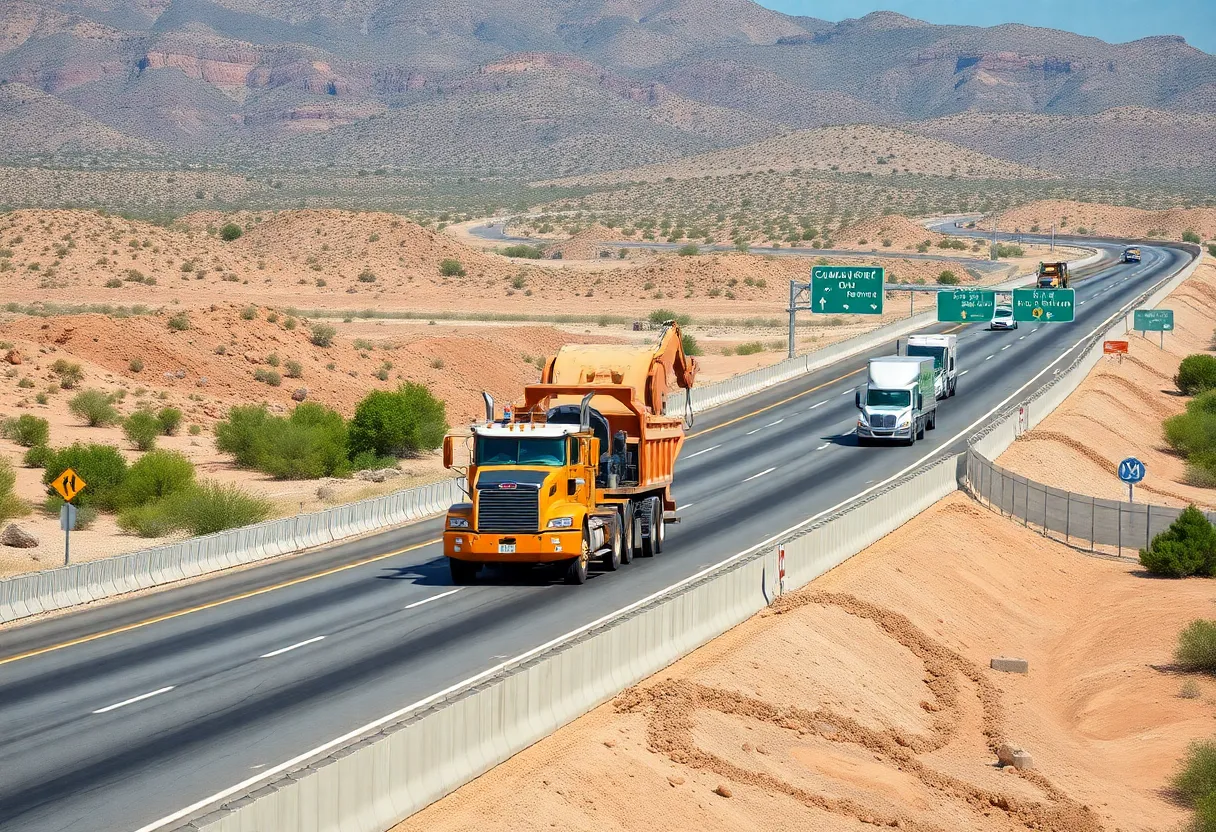Tucson, October 18, 2025
The Arizona Department of Transportation has awarded a $600 million contract for widening Interstate 10 near Tucson. This essential project aims to improve traffic flow and safety while addressing congestion along a 15-mile stretch of the highway that links Phoenix and New Mexico. Construction is scheduled to begin in spring 2026, with a focus on adding lanes and incorporating modern safety features. Local economies stand to benefit from job creation and enhanced logistics.
Tucson, AZ – Major $600 Million Highway Project to Widen I-10 and Ease Traffic Congestion
In a significant step toward improving traffic flow in southern Arizona, the Arizona Department of Transportation has awarded a $600 million contract to engineering firm Jacobs and construction company Sundt for a major expansion of Interstate 10 near Tucson. This ambitious project, set to begin construction next spring, targets a 15-mile stretch of the highway that serves as a critical link between Phoenix and New Mexico. The initiative promises to reduce chronic congestion, enhance safety, and support the region’s growing transportation needs.
The project focuses on widening the existing interstate to add lanes in both directions, addressing bottlenecks that have long plagued this busy corridor. Engineers plan to incorporate modern safety features, such as improved shoulders, better signage, and enhanced barriers to protect drivers. These upgrades aim to handle the increasing volume of commercial and commuter traffic, making daily travel more reliable for thousands of Arizonans. The corridor sees heavy use from freight haulers transporting goods across the state and beyond, underscoring the economic importance of smoother operations.
Project Timeline and Scope
Construction is scheduled to start in spring 2026, with completion targeted for several years later, depending on weather, funding, and unforeseen challenges. The 15-mile segment under improvement lies just west of Tucson, a key area where traffic volumes spike due to the city’s role as a commercial hub. Workers will expand the highway from its current configuration to include additional through-lanes, aiming to increase capacity by up to 50% in high-traffic zones. This expansion aligns with broader state goals to modernize Arizona’s interstate system, which handles millions of vehicles annually.
During the work, crews will implement phased construction to minimize disruptions. Expect temporary lane closures and detours, particularly during peak building periods, but planners emphasize keeping at least two lanes open in each direction at all times. The project also includes environmental safeguards, such as measures to protect local wildlife habitats and control dust from construction activities. These details reflect a balanced approach to infrastructure development in a desert region sensitive to ecological impacts.
Economic and Community Impacts
Economically, the initiative stands to boost local businesses through job creation and improved logistics. The contract alone will generate hundreds of positions in engineering, construction, and support roles, injecting funds into the Tucson economy during the build phase. Once complete, the upgraded highway will facilitate faster delivery of goods, benefiting manufacturers, retailers, and agriculture in the area. Tucson, with its growing population and proximity to the U.S.-Mexico border, relies on efficient roadways to sustain trade and tourism.
For commuters, the changes promise shorter travel times and reduced accident risks. Data from transportation studies show that the current I-10 stretch experiences frequent delays, especially during rush hours and holiday periods. By adding lanes and refining interchanges, the project addresses these pain points directly. Safety enhancements, like rumble strips and clearer lane markings, respond to historical incident reports in the area, where speeding and heavy truck traffic have contributed to collisions.
Broader Context of Arizona Infrastructure Efforts
This I-10 widening fits into a larger pattern of infrastructure investments across Arizona, driven by population growth and economic expansion. The state has prioritized highway upgrades to accommodate rising vehicle miles traveled, which have surged in recent years due to urban sprawl and remote work trends. Similar projects elsewhere in the state, including bridge repairs and smart traffic systems, demonstrate a coordinated push to modernize roadways for the 21st century.
The selection of Jacobs and Sundt came after a competitive bidding process, highlighting their expertise in large-scale transportation projects. Jacobs brings advanced engineering solutions, while Sundt offers proven construction management in challenging terrains. Together, they will collaborate with state officials to ensure the project meets federal standards for interstate highways, funded partly through a mix of state bonds and federal grants.
Residents and businesses along the route can anticipate updates through public meetings and online portals, allowing input on specific phases. This community engagement helps tailor the work to local needs, such as access to nearby industrial parks and residential areas. As Arizona continues to grow, initiatives like this underscore the vital role of transportation in fostering connectivity and prosperity.
In summary, the $600 million I-10 project near Tucson represents a forward-thinking investment in Arizona’s future. By tackling congestion and safety on this essential corridor, it positions the region for sustained economic vitality and smoother daily mobility for all users.
FAQ
- What is the main purpose of the $600 million contract awarded by the Arizona Department of Transportation?
- The main purpose is to widen Interstate 10 near Tucson, adding lanes and improving safety over a 15-mile stretch to ease congestion on the vital corridor linking Phoenix and New Mexico.
- When will construction for the I-10 widening project begin?
- Construction is set to begin next spring, specifically in spring 2026.
- Which companies were awarded the contract for the highway project?
- The contract was awarded to engineering firm Jacobs and construction company Sundt.
- How will the project improve safety on I-10?
- The project will incorporate modern safety features, such as improved shoulders, better signage, and enhanced barriers to protect drivers.
- What is the length of the highway segment being upgraded?
- The project targets a 15-mile stretch of Interstate 10 just west of Tucson.
- Will the construction cause major traffic disruptions?
- Phased construction will be used to minimize disruptions, keeping at least two lanes open in each direction at all times, though temporary lane closures and detours may occur.
Key Features of the I-10 Widening Project
| Feature | Description |
|---|---|
| Contract Value | $600 million |
| Awarded To | Jacobs and Sundt |
| Project Length | 15 miles |
| Start Date | Spring 2026 |
| Main Goals | Ease congestion, add lanes, improve safety |
| Location | West of Tucson, linking Phoenix and New Mexico |
| Safety Upgrades | Improved shoulders, better signage, enhanced barriers |
| Traffic Management | Phased construction with at least two lanes open per direction |




